If you’ve lived in Prague for any length of time, it’s easy to feel quite proud of your local knowledge. When you have visitors, you can offer plenty of suggestions for them, but it’s fair to say that even “veteran” residents haven’t ticked off every entry in the list of Prague attractions, including a handful right in the city center. In this article, we take a look at some of the most rewarding but overlooked attractions in Prague.
Old Sewage Works (Stará čistírna)
Hidden away in an uncharacteristically workaday part of Bubeneč, the Old Sewage Works might not sound like everybody’s idea of a good day out, but this attraction is much less geeky than its name suggests – and completely sewage-free.
Designed by British engineer William Lindley and completed at the turn of the last century, the complex was once Prague’s main sewage works until 1967, when this role was transferred to a new facility, on the rather inappropriately named Emperor’s Island (Císařský ostrov) nearby.
Guided tours are available, and the striking brick-vaulted sewers, whose elegant arches and lofty spaces are strikingly reminiscent of a cathedral, are the highlight. Upstairs, visitors can admire an impressive collection of machinery, housed in various chambers. You can see the machines in action on special occasions.
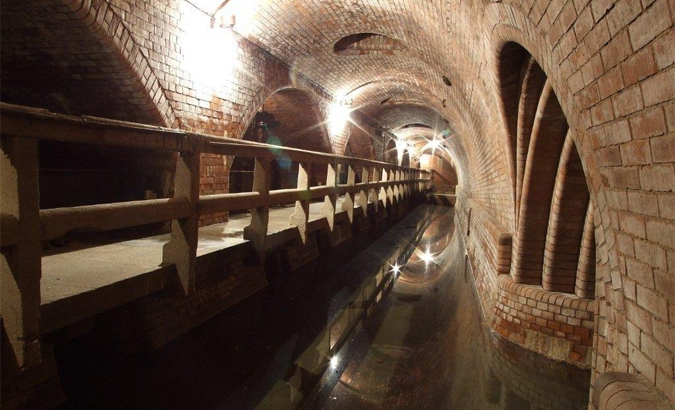
The complex became a museum in 1992 and was granted national historic monument status in 2010 in recognition of its importance as an example of Czech industrial architecture. The Old Sewage Works is also a regular participant in the European Heritage Days (Dny evropského dědictví) programme (see article) in September.
For years, the Old Sewage Works was known in English as the Eco-Technical Museum and run by a foundation bearing the same name. In 2011, this organization merged with the Stará čistírna association, and the museum is now officially the Old Sewage Works (Stará čistírna), although the old name is often still used.
Museum website: www.staracistirna.cz
www.ehd.cz
Our Lady of the Snows Church (Kostel panny Marie Sněžné) and Franciscan Gardens (Františkánská zahrada)
If you’ve ever taken a shortcut between Národní třída and Wenceslas Square, you’ve probably done so via Jungmannovo náměstí. It’s likely though that you’ve completely bypassed Our Lady of the Snows church (Kostel panny Marie sněžné) en route, without ever stopping by. Perhaps the down and outs permanently on patrol nearby is one reason why. But the sheer height of the building – the nave is the tallest in the Czech Republic – is one reason why this very accessibly located church deserves a closer look.
Established by King Czech Charles IV in the 14th century, the church was given to the Carmelites, although Hussite conflicts prevented its completion. Only the presbytery (today’s nave) was built, but had it been completed, Our Lady of the Snows would have rivalled St Vitus Cathedral in terms of size.
As with so many Gothic churches in Prague, Our Lady of the Snows was given an overhaul during the Baroque era and the dark furnishings from that time contrast with the bright, soaring interior, lit by tall, slender Gothic windows.
The unusual name of the church derives from the altar painting, which refers to the church of the same name in Rome. According to legend, St Mary of the Snows in the Italian capital was constructed after a heavy snowfall in August was interpreted as sign to build a church.
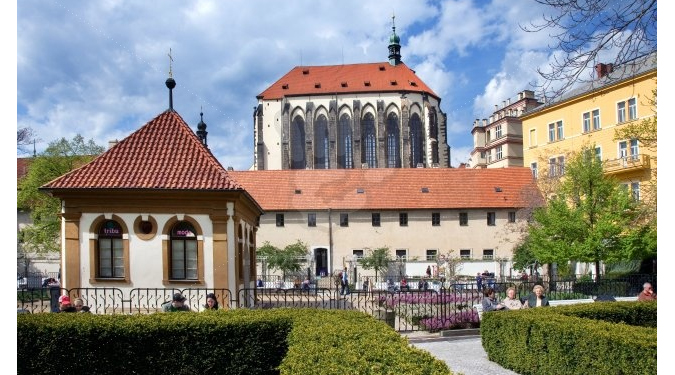
St. Mary of the Snows towers over the neighboring Franciscan Gardens (Františkanská záhrada), the best place to appreciate the full height of the church. Although the rear of the buildings on Wenceslas Square forms one side of this green quadrangle, the Gardens are an oasis of peace, with plenty of trees and shrubbery to afford shade on a hot day. The wooden gallery and foliage at the Jungmannovo entrance give the gardens an almost village atmosphere, as do the yellow buildings forming part of the church complex. A popular pastime in the Franciscan Gardens is enjoying an ice cream from the Světozor sweet shop, located in the nearby Světozor arcade.
St. Gall’s Church (Kostel sv. Havla)
Like Our Lady of the Snows, St. Gall’s is another very centrally-located but forgotten church, perhaps because visitors rush past on the route from Wenceslas Square to Old Town Square.
The imposing edifice, whose two bulky towers vie with the Neo-Renaissance bulk of the Česká spořitelna bank next door, forms an attractive backdrop to the bustle of Havelská market. But the interior, which resembles a scaled-down version of that of James Church, offers escape from the noise outside.
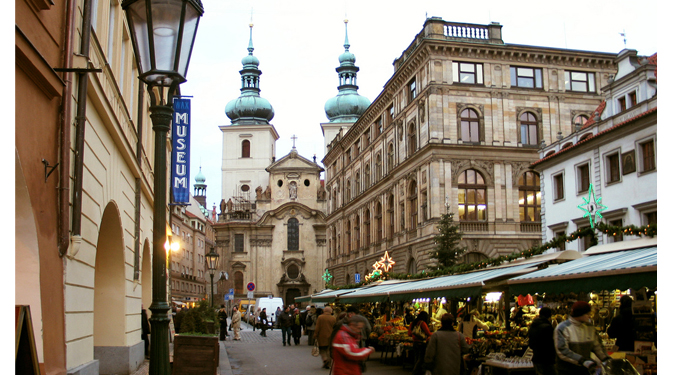
St. Michael’s Church (Kostel sv. Michala), Petřín Hill
Petřín is one of Prague’s most obvious attractions, but the wooded hill right in the center of Prague is also home to a quirky symbol of the history of the former Czechoslovakia.
During the First Republic (1918-38), the territory of former Czechoslovakia stretched much further east, tapering towards Romania and Ukraine. The easternmost region, Ruthenia, now forms the western edge of Ukraine. It was from there that the tiny wooden Orthodox church of St. Michael (or St. Michael the Archangel to give it its full name) was transported to Prague.
The naïve, rough-hewn church, which looks as if it has grown out of the ground like a trio of mushrooms, is built entirely of wood, and in traditional orthodox fashion is split into three sections, topped by spires. Architecturally, St. Michael’s is a mix of the Bojkov style of Ruthenia and rustic Baroque. Appropriately, for a city abounding in Baroque, the spires have more than a hint of this style.
The Ruthenian people gifted the church to Prague as an example of their architecture, and in 1929 St. Michael’s was dismantled and brought, piece by piece, to their distant capital in special trains. The interior, which can be viewed upon appointment, is decorated in red, white and green.
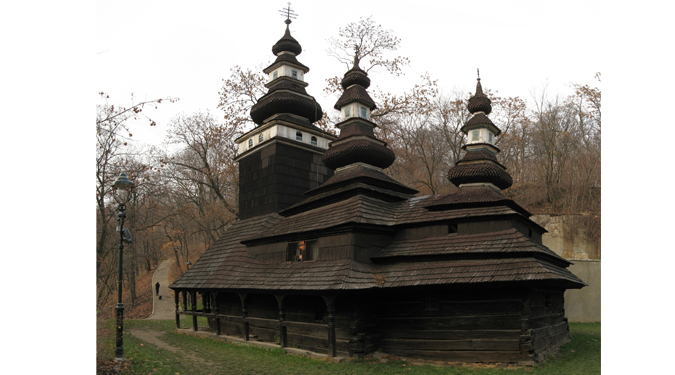
You’ll find the church almost hidden away in a peaceful corner of the Kinský Gardens (Kinského záhrada) the southern slopes of Petřín Hill. The diminutive spires are almost hidden amongst the trees, so make sure you follow a map of the park closely, otherwise you’ll find yourself endlessly scaling and descending the steep paths of the park.
The church is part of the Musaion ethnographic museum
Thunovská street, Lesser Quarter
The main pedestrian routes to Prague Castle are Nerudova or the Old Castle Steps (Starecké zámecké schody). But Thunovská, a lane roughly parallel to Nerudova, is a walk through the Lesser Quarter at its most atmospheric.
The narrow lane leads off Tomášská and could easily be missed, but the views up towards the Castle are vinviting. You’ll soon pass on your left the relatively plain façade of the Lower House of the Czech Parliament (Poslanecká sněmovna), and a few steps on you’ll come across a less elevated but more perhaps popular institution, the Hippo (U Hrochu) pub. Despite a recent facelift, this watering hole is a real survivor amidst all the gentrification and blatant commercialism of establishments nearby.
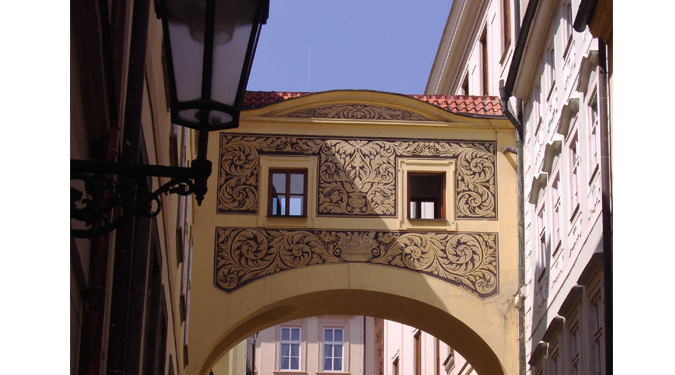
A couple of steps on, at the end of a very short lane, is the Neo-Gothic entrance to the British Embassy, with a bulky, no-nonsense bust of Churchill guarding it. The adjacent building, in peeling ochre, is a rare glimpse of the Lesser Quarter pre-1989, shabby but still very picturesque.
As Thunovská gains height it becomes the New Castle Steps (Nové zámecké schody) in the ascent to Prague Castle. The climb will exercise your lungs a little, but is ultimately very rewarding. Once you reach the top and see the whole of Prague spread out before you, from Karlín to Háje, you‘ll be glad you made the effort.
Related articles
- 10 Travel Articles That’ll Get You Excited for Autumn In the Czech Republic
- VIDEO: Amazing Recreation of 14th-Century Construction of Charles Bridge
- Prague Is the Cheapest City In Europe for Ballet, Opera, Art
- Český Krumlov Mulls Over Charging Tourists a Toll
- New Travel Guide Puts Czech Monasteries On the Map












 Reading time: 6 minutes
Reading time: 6 minutes 


















